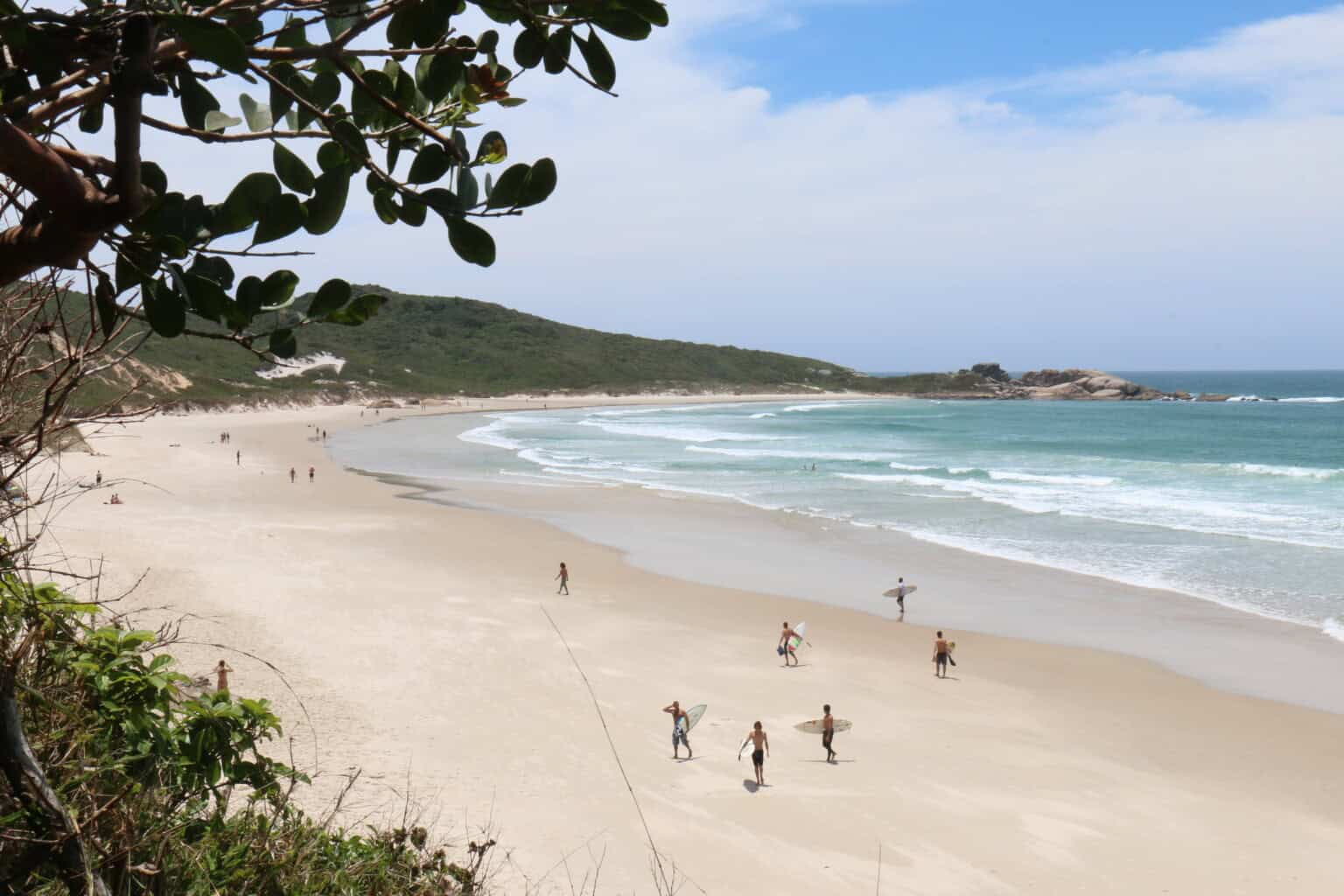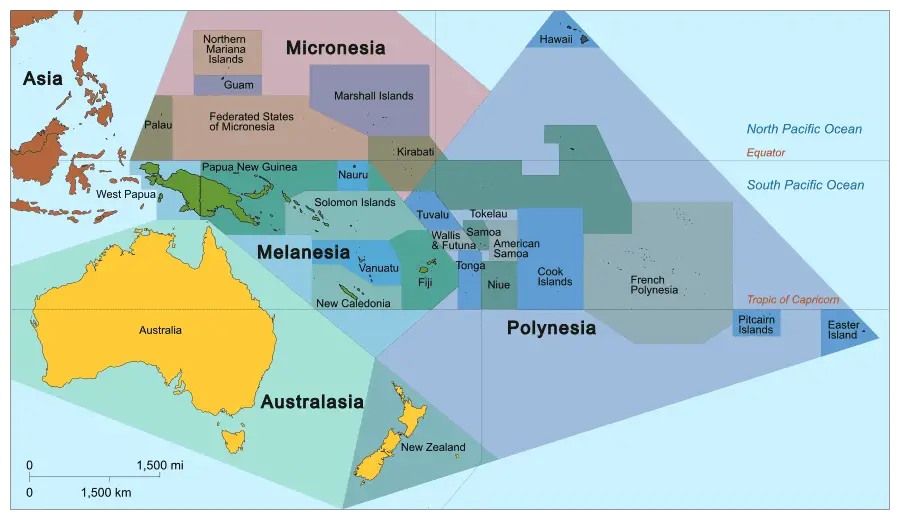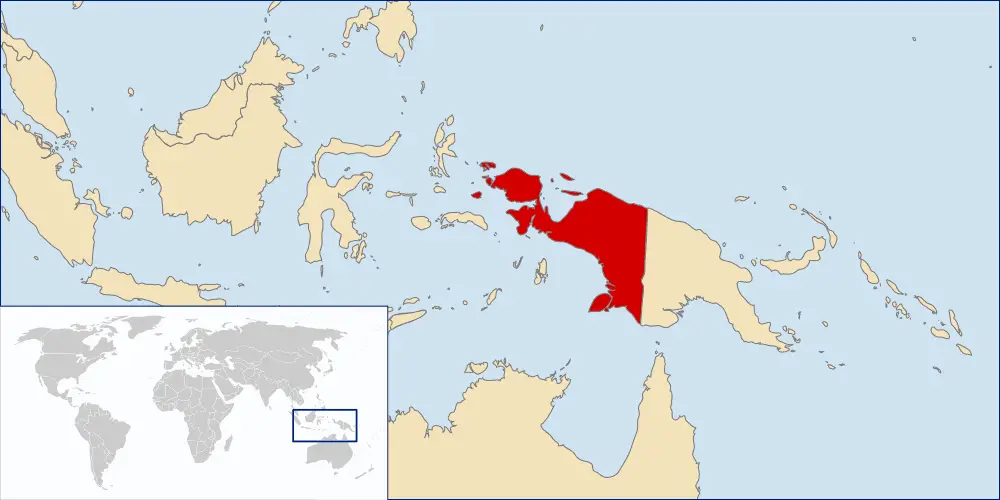
So the Australian continent is without any doubt the most confusing continent of them all and the hardest to define how many countries there are in. Apart from the Australian continent, you might have heard of terms like Oceania and Australasia, but what do they even mean and how many countries are considered to be a part of the Australian continent? If you google how many countries does the continent of Australia has, the numbers 1, 3 and 14 will usually pop up.
The correct answer is that there is only 1 country on the Australian continent (Australia), but 3 countries in Australasia and 14 in Oceania. To understand how I came to that conclusion, read on!
Definition Of A Country
First things first, let me give a quick rundown of what how to actually define a country. The way to define a country was set in 1933 at the Montevideo Convention, where in total four criteria were established for a country to be able to call itself a country:
1. a permanent population,
2. a defined territory,
3. a government,
4. the capacity to engage diplomatically with other states.
Although the Montevideo Convention does not mention international recognition in its criteria, it is considered a key factor that plays a vital role when defining whether a country is actually a country. Applying these criteria in the real world is harder and not as straightforward as one might think and most often it is the latter condition that often causes doubt. To know if a country has sufficient international recognition to call itself a country, the best place to look is the UN member state list, as only fully recognized states are accepted. However, as with all things, exceptions can always be made for those special cases. As I did with both Kosovo and Taiwan by including them in my all the countries in the world-list.
Breaking Down Australia, Australasia and Oceania
You know, diving into the terms like the Australian continent, Australasia, and Oceania can be a bit like untangling a set of headphones – it seems straightforward until you really get into it. It’s a bit like trying to describe the difference between Scandinavia and the Nordic countries, if you’ve ever come across that. They’re related but not quite the same, right? The same goes for the region around Australia, so let me try to break it down for you.
When talking about the Australian continent it is important to keep two things in mind: The political and geological definition of the continent. Politically, the continent of Australia refers to the country of Australia, encompassing mainland Australia and Tasmania. Geologically, the Australian continent is defined by the Australian tectonic plate which includes, the landmass of Australia, Papa New Guinea, and parts of Indonesia. However, when referring to the continent of Australia I have chosen to go with the most common political definition, where the Australian continent only encompasses the land of Australia.
Australasia on the other hand is a broader region encompassing Australia, New Zealand, and also the Island of New Guinea, which is politically split between Papua New Guinea and a part of Indonesia. In total, there are 3 countries located in Australasia: Australia, Papa New Guinea and New Zealand. Confused yet? It gets worse…
Oceania is an even bigger region that goes beyond Australasia to include three additional subregions: Melanesia, Micronesia, and Polynesia, alongside Australasia. This region includes thousands of islands and small island nations scattered across the central and southern Pacific Ocean. Melanesia features countries like Fiji and Papua New Guinea; Micronesia is made up of smaller island nations such as Palau and the Marshall Islands; and Polynesia comprises nations like Samoa, Tonga, and even Hawaii!
So does that mean that island countries like New Zealand, Fiji and Palau are not actually located on a continent but rather in a subregion know as Ocean and Australasia? Yes, if you ask me.

What Does The UN say?
The UN calls the region as a whole for Oceani and thereafter divides it further into 4 additional subregions: Australia & New Zealand, Melanesia, Micronesia, and Polynesia. However, no distinction is made for Australasia, instead New Zealand is grouped with Australia, while Papa New Guinea is placed within the subregion of Melanesia.
Australia and New Zealand (2):
1. Australia
2. New Zealand
Melanesia (4):
3. Fiji
4. Papua New Guinea
5. Solomon Islands
6. Vanuatu
Micronesia (5):
7. Federated States of Micronesia
8. Kiribati
9. Marshall Islands
10. Nauru
11. Palau
Polynesia (3):
12. Samoa
13. Tonga
14. Tuvalu
So why does the UN make this kind of division instead of simply referring to the whole region as Oceania? Well, the answer lies in the fact that the UN bases its division not solely on geography but also on historical and cultural aspects of the region. Grouping these islands in this way helps to recognize these nations’ distinct cultural and linguistic identities and at the same time address each subregion’s unique environmental and ecological challenges, and also manage varying political and economic interests.
Disputed Territories
When it comes to disputed territories in the Oceania region, there are no well-known ones, like Taiwan in Asia, Palestine in the Middle East and Kosovo in Europe. However, two notable independence movements in the region are worth mentioning: New Caledonia and West Papua, each with unique historical backgrounds and political situations. Yet, neither of them fulfills the criteria to be considered independent countries (although they probably think otherwise), due to their lack of international recognition.
New Caledonia: New Caledonia, a French overseas territory in the Pacific, has a significant movement pushing for independence. The indigenous Kanak population, who make up about 40% of the population, has been at the forefront of these efforts. The push for independence gained momentum after violent clashes in the 1980s between pro-independence activists and those wanting to remain with France.
Since then, there have been several referendums on independence. The most recent ones, held in 2018, 2020, and 2021, saw a majority voting to remain part of France. However, the independence movement remains active, with arguments centering around cultural identity, economic self-sufficiency, and political autonomy. The political situation is further complicated by New Caledonia’s significant nickel deposits, making it strategically important.
West Papua: West Papua, the western half of the island of New Guinea, has a complex history involving Dutch colonialism, Indonesian governance, and a persistent independence movement. The region was a Dutch colony separated from the eastern half of the island, Papua New Guinea (an Australian territory until its independence). In 1961, West Papua declared independence, but this was not internationally recognized.
Indonesia took control of West Papua in 1963. The 1969 “Act of Free Choice”, which formalized Indonesian control, is widely criticized as being conducted under duress and not representative of the West Papuan people’s will. Since then, there has been ongoing conflict and a strong independence movement, driven by cultural and ethnic differences. The Indonesian government maintains strict control over the region, and international support for West Papua’s independence is limited, making the situation particularly fraught.

Dependent Territories That People Mistake For Countries
Apart from the disputed territories mentioned above, there are several states and territories in Oceania that people might mistakenly believe are independent countries. Some of these include:
- French Polynesia: Also an overseas collectivity of France, known for islands like Tahiti. Its distinct Polynesian culture and governance might give the impression of it being an independent nation.
- American Samoa: An unincorporated territory of the United States, American Samoa has a local government and cultural identity distinct from the U.S., which can lead to misconceptions about its independence.
- Niue and the Cook Islands: Both are in free association with New Zealand. They have a high degree of self-governance and are members of some international organizations, which can be misleading about their status as independent countries.
- Guam: An unincorporated territory of the United States, known for its strategic military base. It has a unique cultural and political identity.
- Northern Mariana Islands: A commonwealth in political union with the United States, with a degree of self-governance.
These regions have varying degrees of autonomy and self-governance, which can contribute to the confusion about their actual political status as non-sovereign entities.
Final Thoughts
As you might have noticed the definitions vary depending on who you might ask, and this is the world of geopolitics in a nutshell! However, if you are on a mission to visit every country in the world, you do need to put your foot down, when it comes to defining countries. So to give you the final answer to the blog post title: There is only one country on the Australian continent, making it the smallest and least populated of all continents (apart from Antarctica), yet there are 14 countries in the region Oceania (Australia included). I also do not consider New Caledonia or West Papua to be independent nations (sorry!). Out of these 14 countries, I have personally only visited 1 (Australia), making it the region I have visited the least. I need to improve! See the full list below:
1. Australia ✅
2. New Zealand
3. Fiji
4. Papua New Guinea
5. Solomon Islands
6. Vanuatu
7. Federated States of Micronesia
8. Kiribati
9. Marshall Islands
10. Nauru
11. Palau
12. Samoa
13. Tonga
14. Tuvalu
